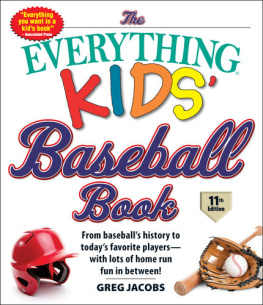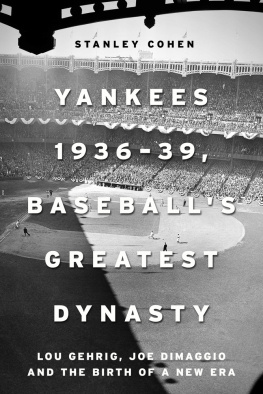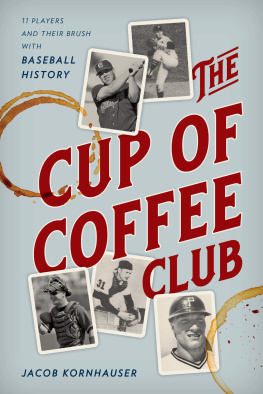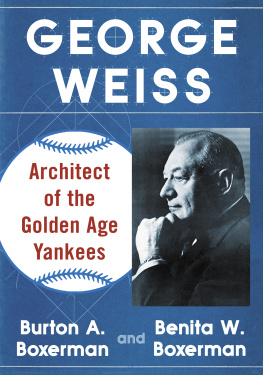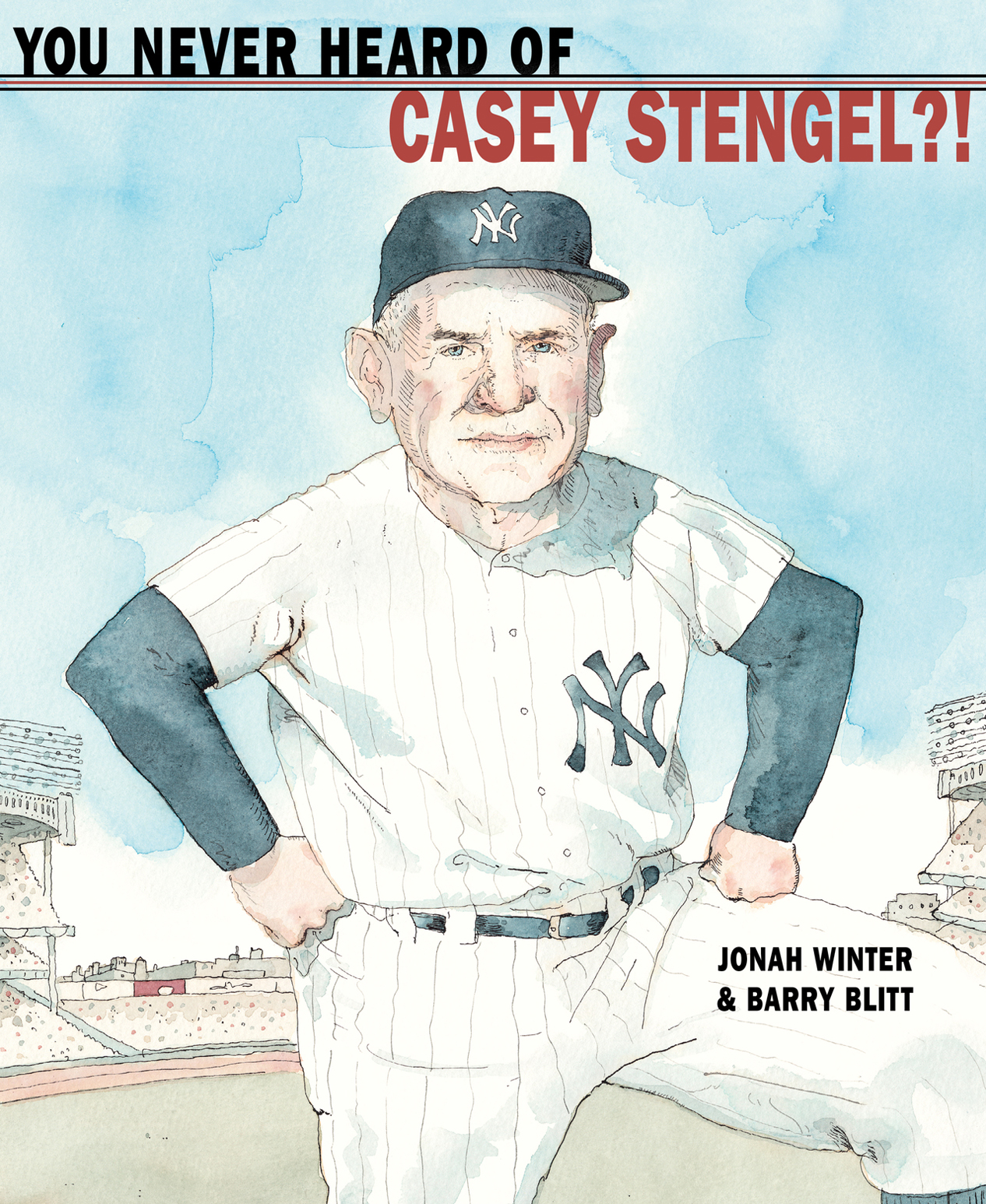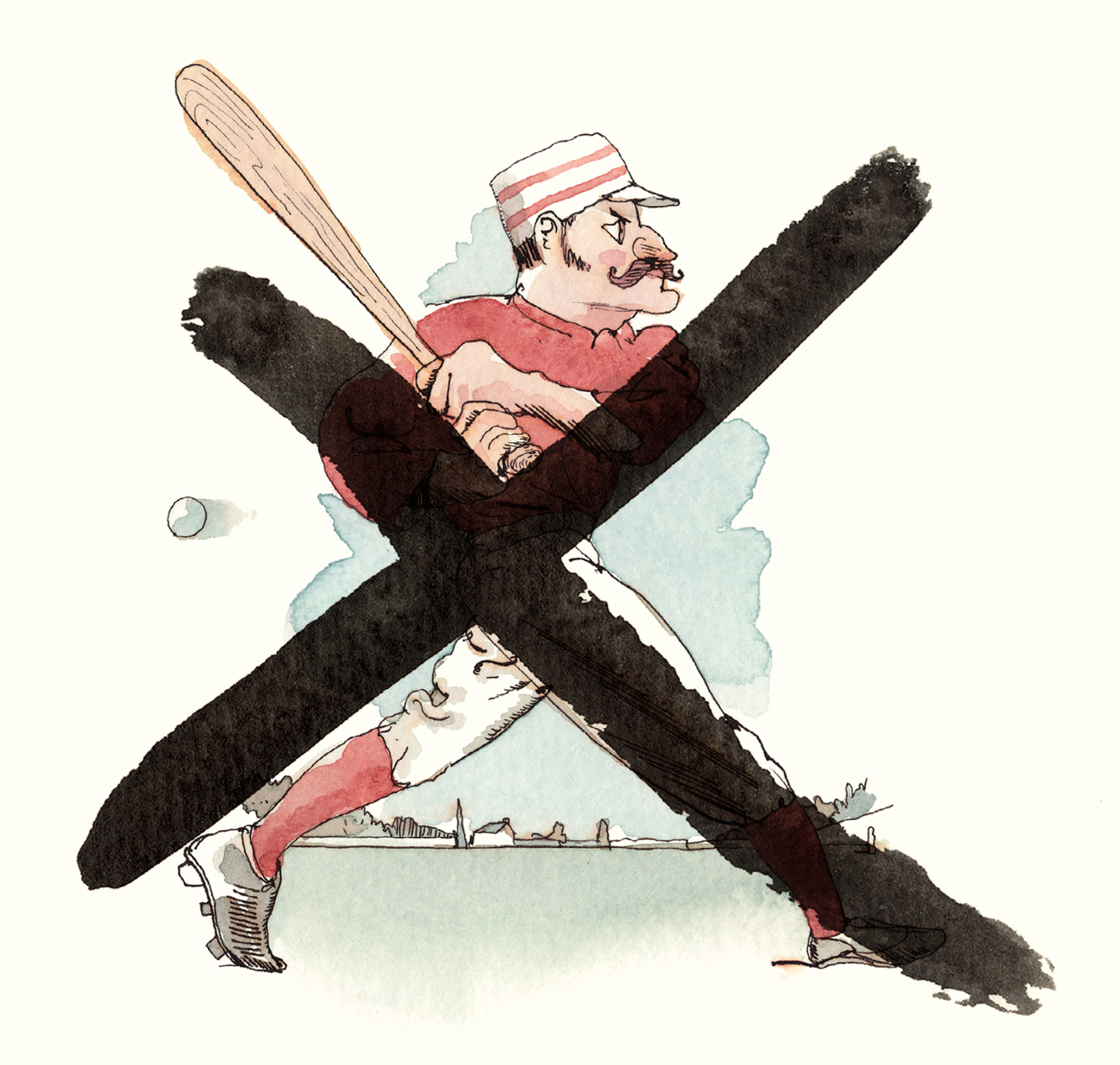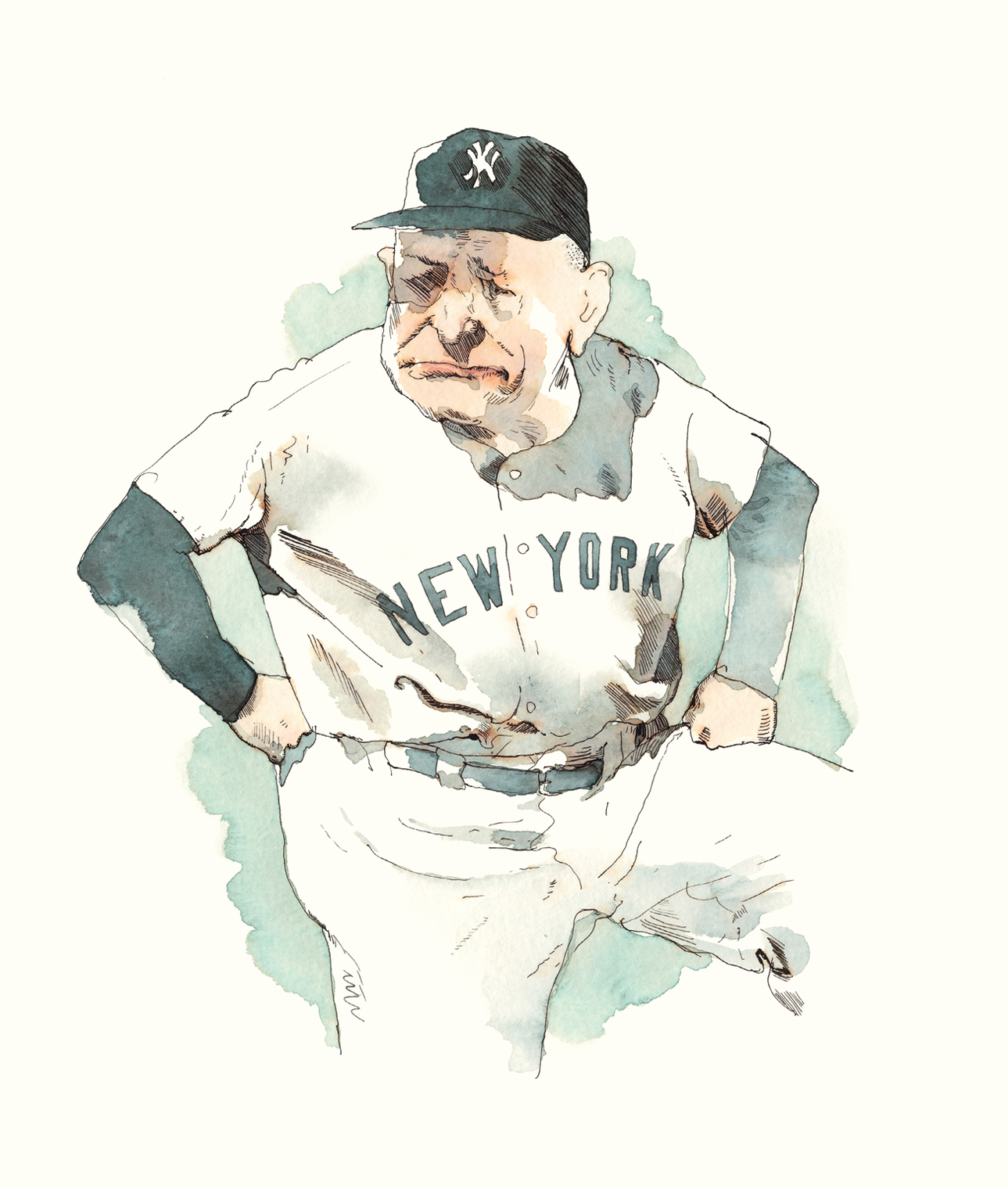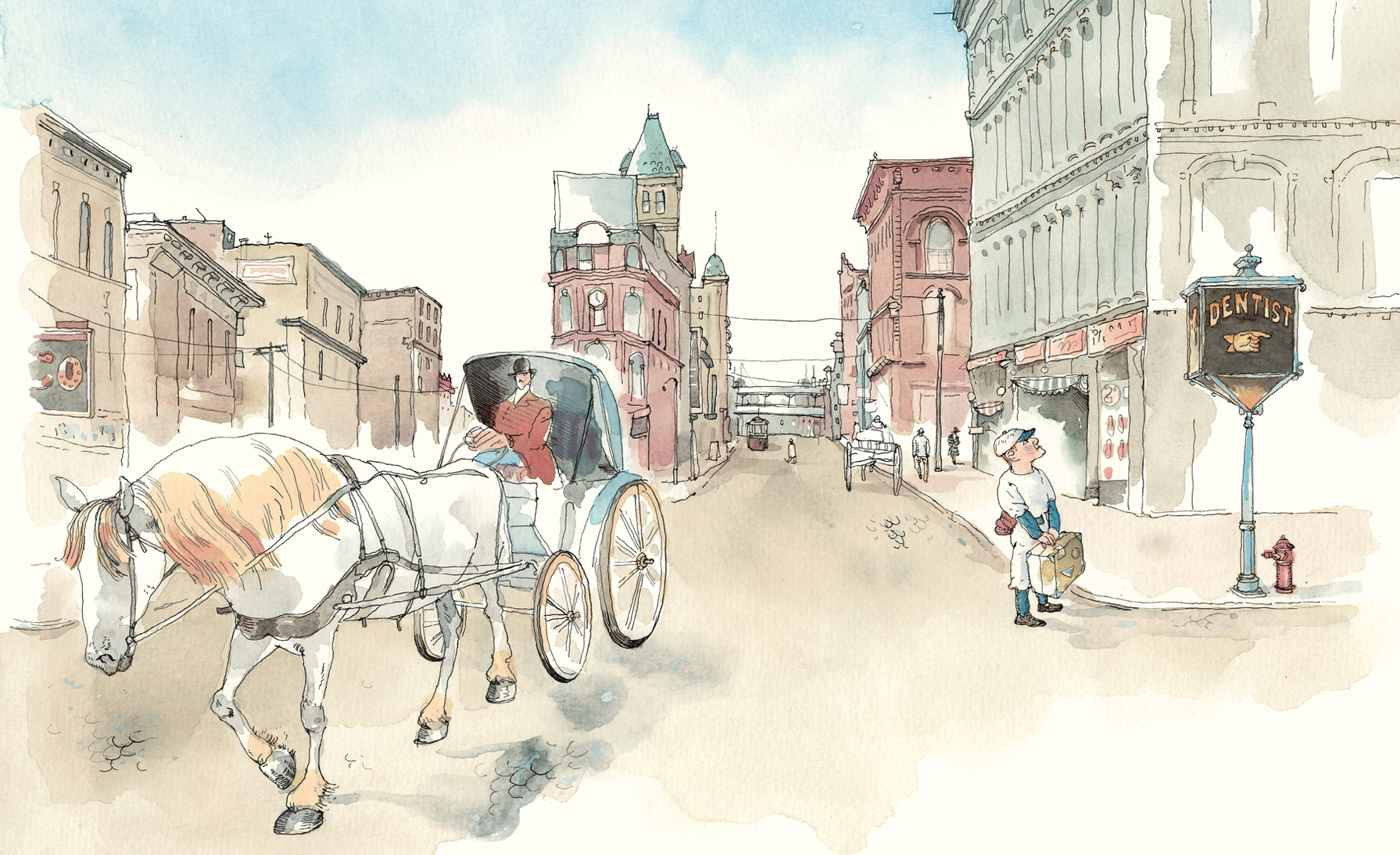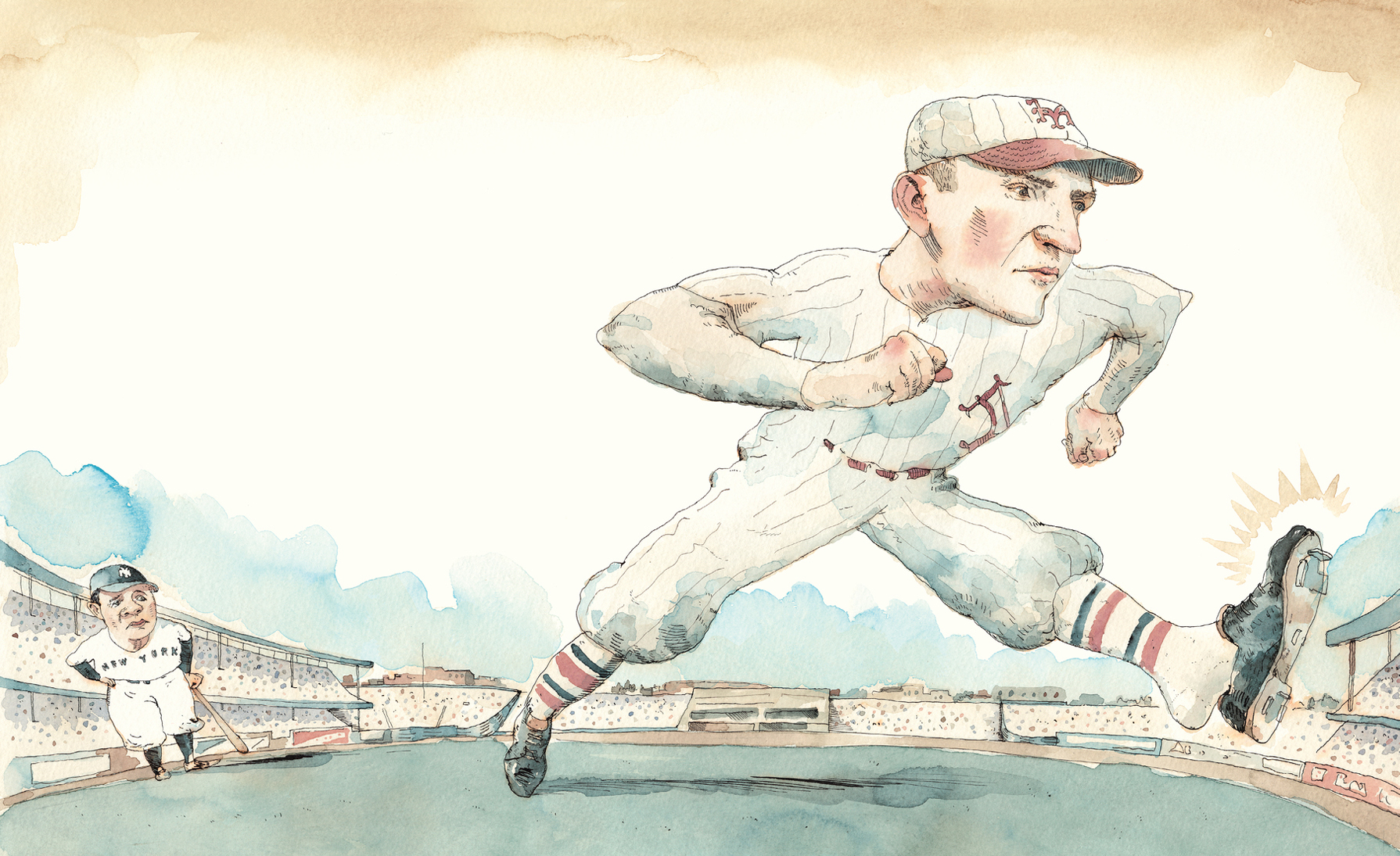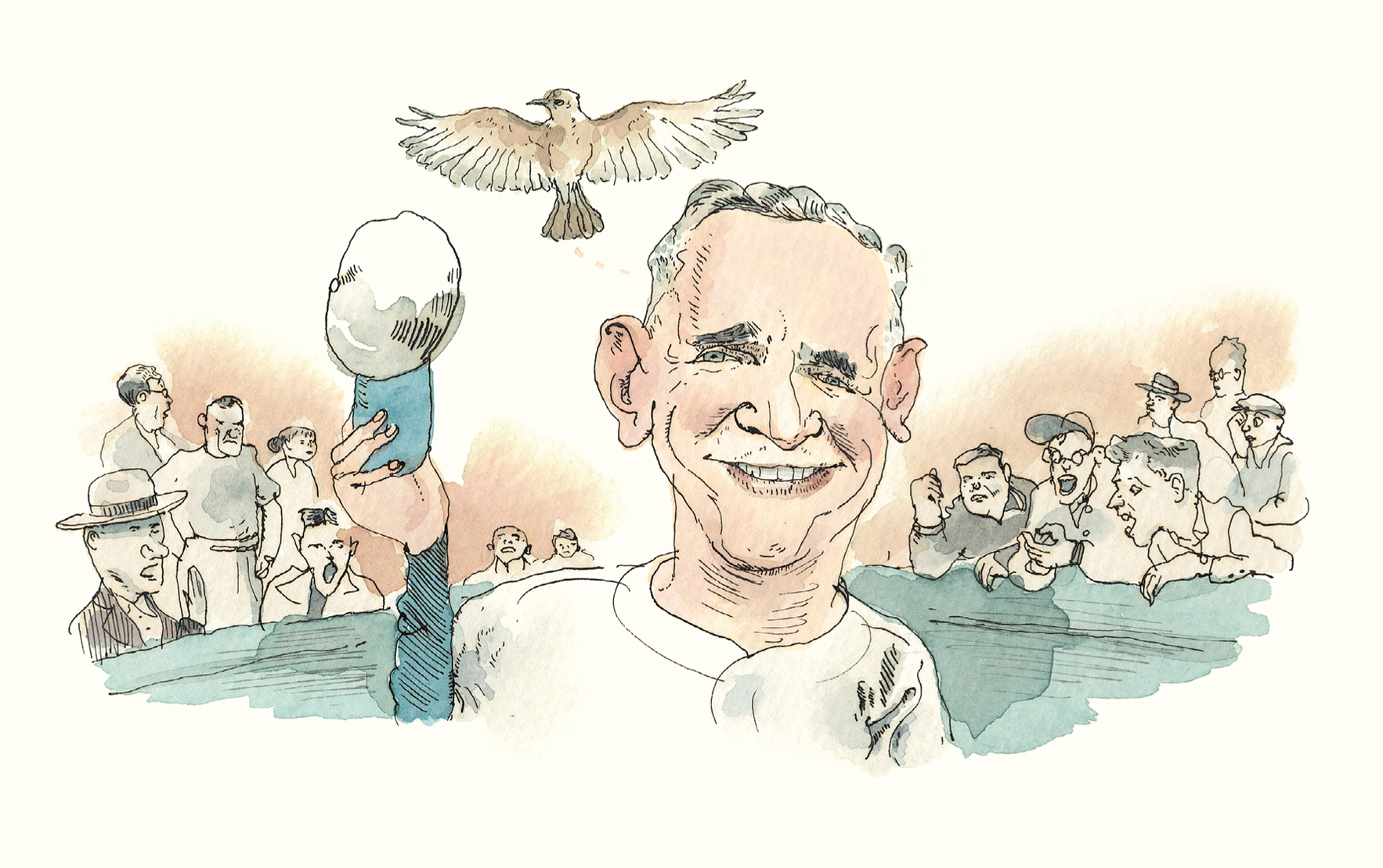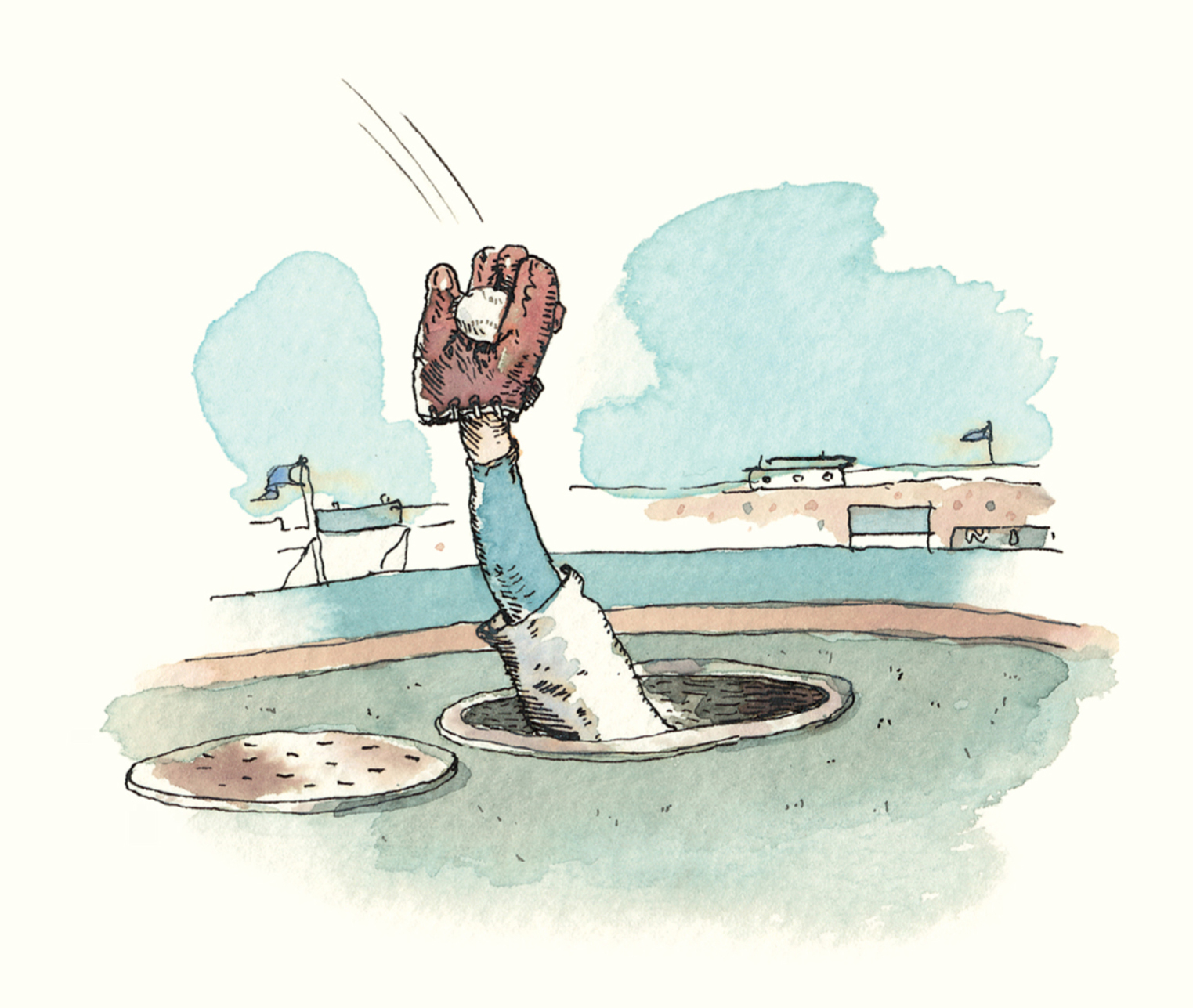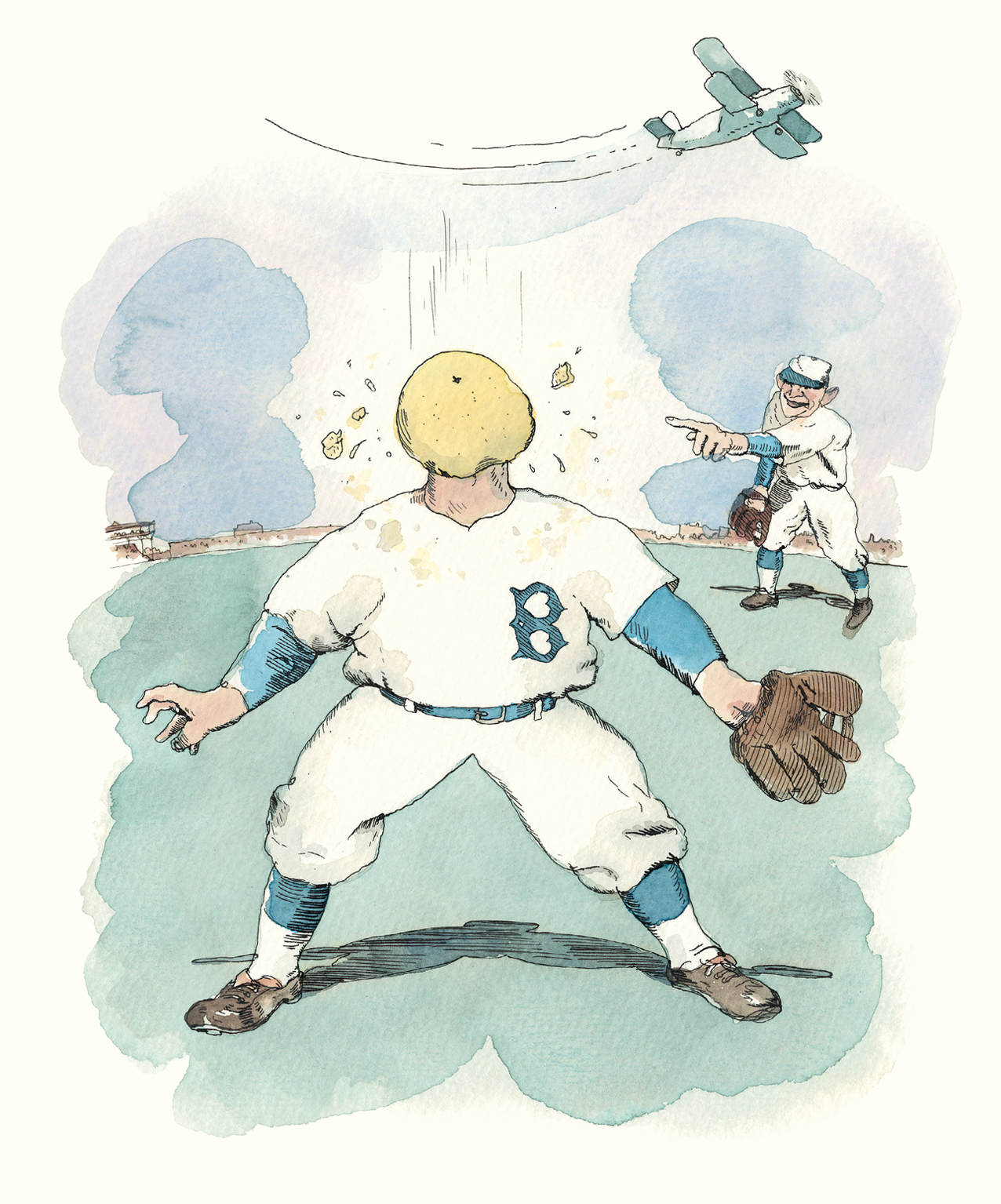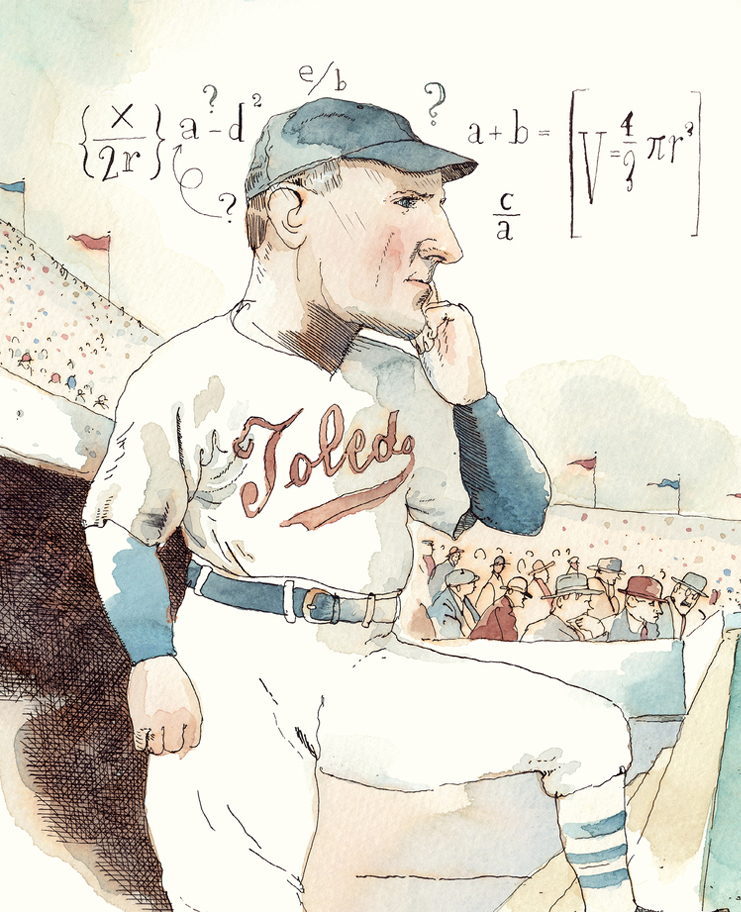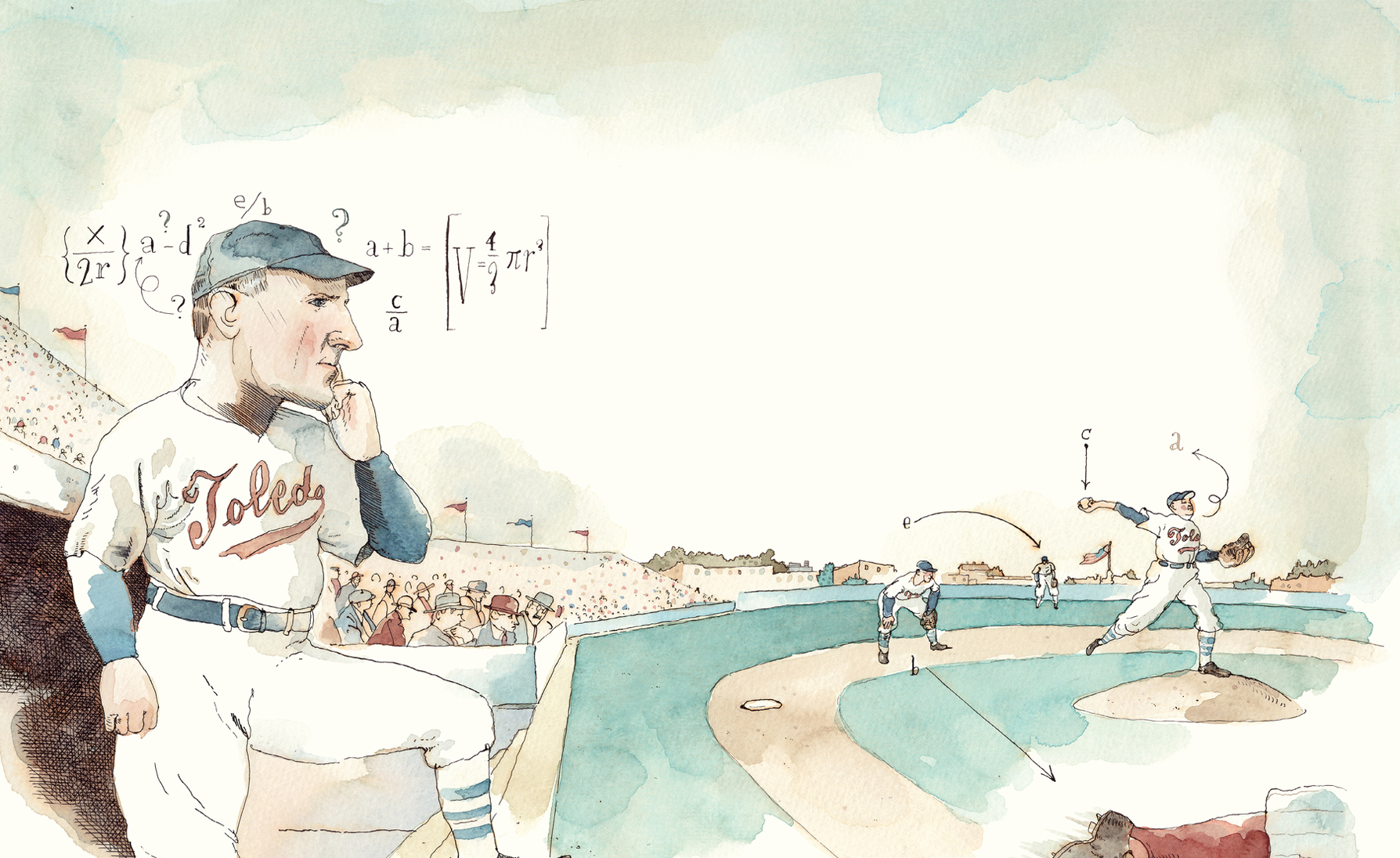Contents
Text copyright 2016 by Jonah Winter
Cover art and interior illustrations copyright 2016 by Barry Blitt
All rights reserved. Published in the United States by Schwartz & Wade Books, an imprint of Random House Childrens Books, a division of Penguin Random House LLC, New York.
Schwartz & Wade Books and the colophon are trademarks of Penguin Random House LLC.
Visit us on the Web! randomhousekids.com
Educators and librarians, for a variety of teaching tools, visit us at RHTeachersLibrarians.com
Library of Congress Cataloging-in-Publication Data
Winter, Jonah.
You never heard of Casey Stengel?! / Jonah Winter, Barry Blitt.
pages cm.
ISBN 978-0-375-87013-2 (trade) ISBN 978-0-375-97013-9 (glb) ISBN 978-0-375-98748-9 (ebook)
1. Stengel, CaseyJuvenile literature. 2. Baseball managersUnited StatesBiographyJuvenile literature.
3. New York Yankees (Baseball team)Juvenile literature. I. Blitt, Barry, ill. II. Title.
GV865.S8 W56 2015
796.357092dc23
[B]
2014005746
eBook ISBN9780375987489
The illustrations are rendered in pen-and-ink and watercolor.
Book design by Rachael Cole and Brianne Farley
Random House Childrens Books supports the First Amendment and celebrates the right to read.
v4.1
a
For My Gal Sal, one heck of a ballplayer J.W.
For Carl and Leslie B.B.
Contents
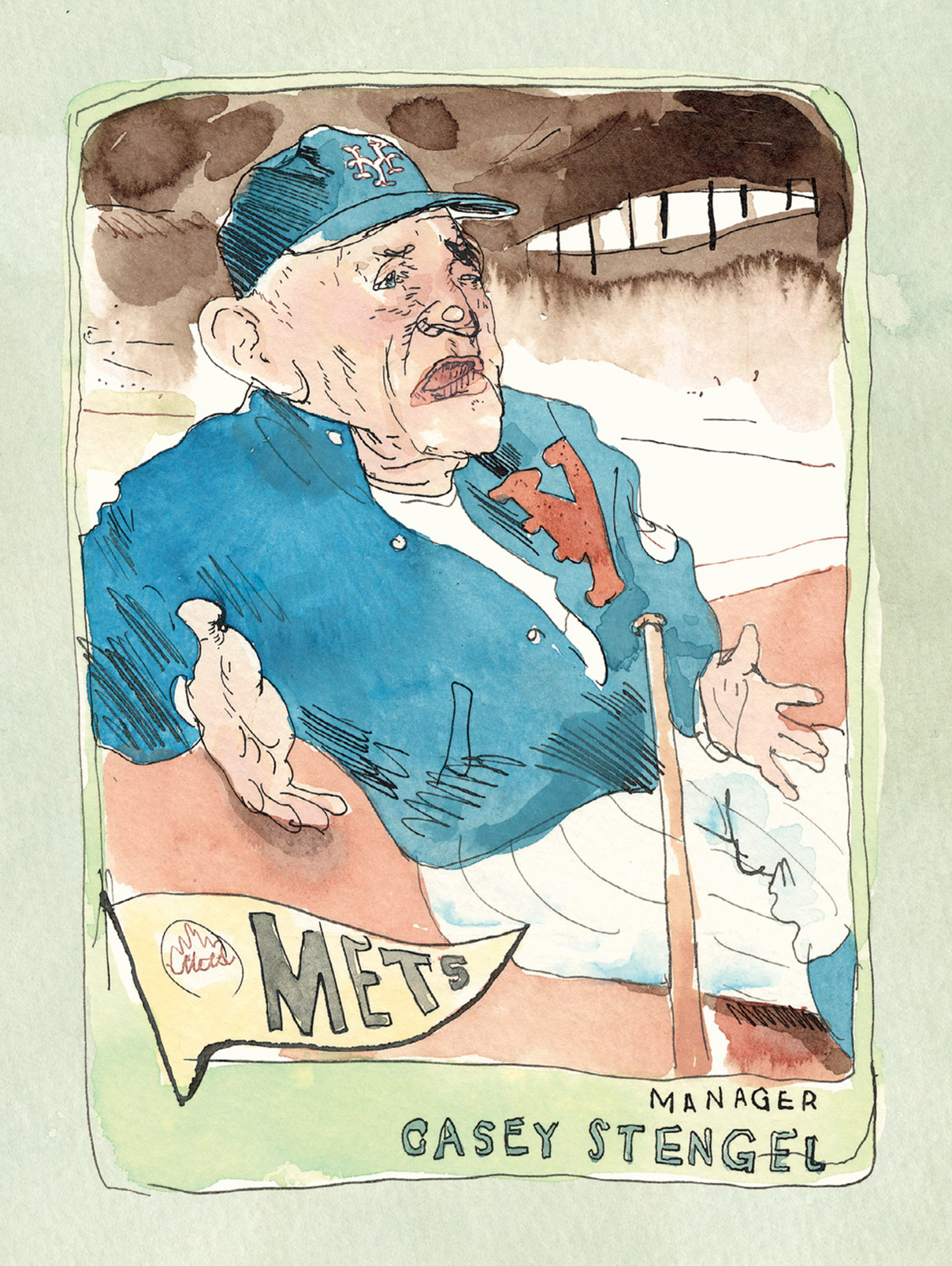
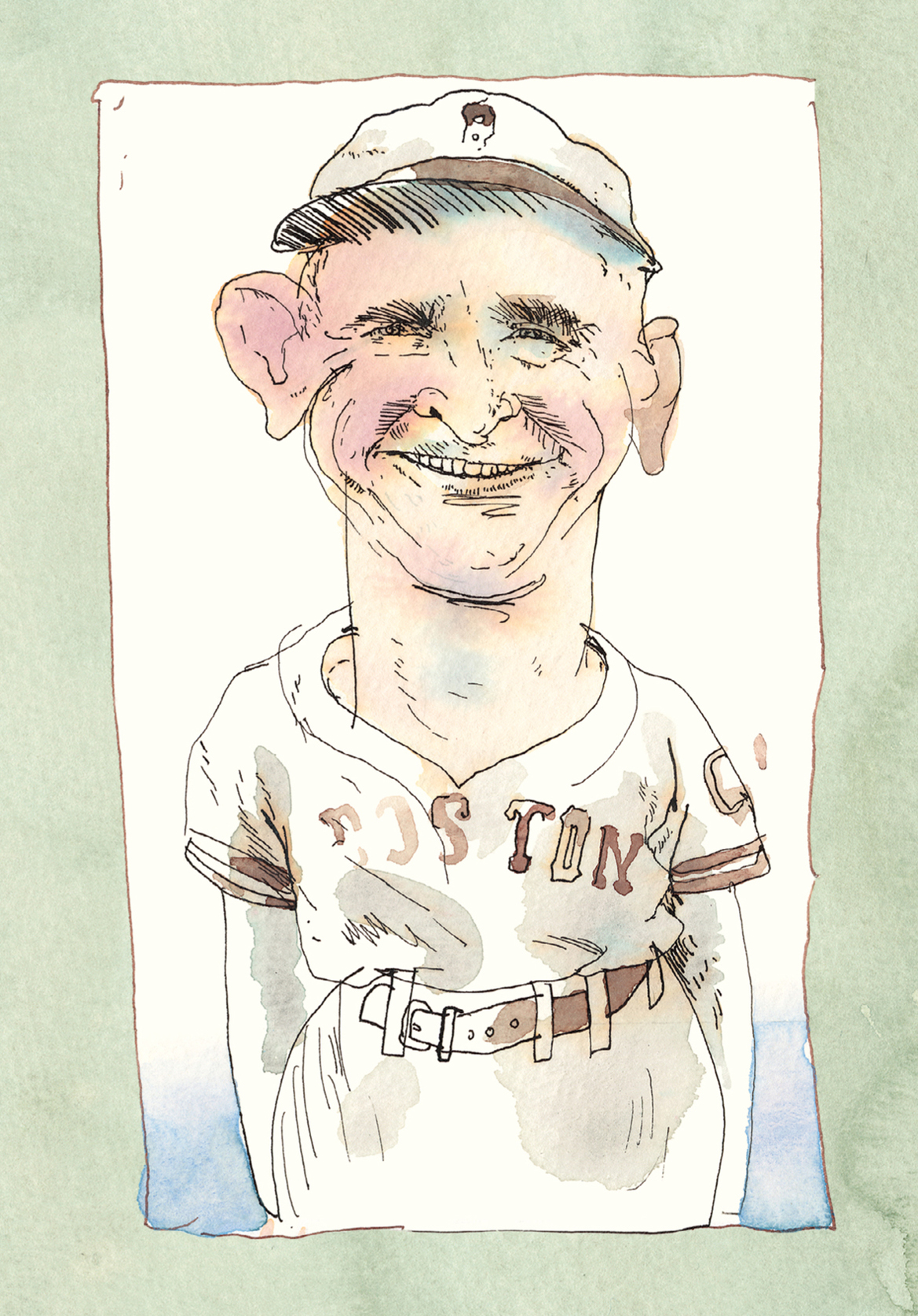
Y ou never heard of Casey Stengel?! But you mustve heard of Casey at the Bat, right? About the mighty baseball player who breaks the hearts of all his fans by striking out? Well, this storys about another Casey. This Casey wasnt all that mighty, and no one expected him to do much of anything but strike out. Boy, did he show them, thougheven if it took him half a century to do it!
Casey grew up with the name Charles Dillon Stengel in Kansas City, Missouri, smack-dab in Americas heartland, back in the late 1800s, when people still rode in horse-drawn buggies.
And like most American boys back in those days, he only ever wanted to be one thinga baseball player.
Okay, well, there was that one time when he wanted to be a dentist. But he decided against it, on account of the fact he was a lefty, he said, and all the dental tools were for right-handers. And so this left-handed, bowlegged, wisecracking character started playing baseball, traveling from one bush-league town to the next with his cardboard suitcase and big dreams of someday making the majors
which he did, in 1912, signed by theseventh-place Brooklyn Dodgers. Whaddayagonnado? His teammates did give him his nickname, though: K.C. (short for his hometown), which got turned into Casey. But after five years, they booted him.
Oh, but he did have his moments, especially as a New York Giant. Like the time he outhit Babe Ruth in the 1923 World Series, slamming two game-winning homers, including one inside-the-park home run that he somehow managed to score on, despite the fact that his left shoe kept almost falling off, causing him to hobble around the bases like an old, bowlegged sailor.
DID YOU KNOW?
On April 5, 1913, Casey Stengel became the first player to hit a home run in the newly built Ebbets Field, home of the Brooklyn Dodgers. And on October 10, 1923, he became the first player to hit a homer in the newly built Yankee Stadium during a World Seriesthat famous inside-the-park round-tripper during which his shoe kept almost falling off.
Here was the problem: Caseys skills at playing baseball were always overshadowed by his even greater skills at being a goofball. The stories of his goofballery are legendary: like the time he tipped his cap to some fans who were booing him, and out flew a sparrow.
Or the time he climbed into a manhole in the outfieldand leapt out to catch a fly ball.
Or the time when he got blamed for giving a pilot some grapefruits to drop on his manager. Casey was not taken seriously. And after fourteen years in the majors, he found himself out of a joband without much to show for it but some funny stories.
What do you do when the one thing you love in life is taken away? Go to dental school? But what if youre a lefty?! If youre Casey, you become a managerof a minor league team called the Toledo Mud Hens. It sounds kind of sad, and it was. For starters, the Mud Hens stank.
And managing baseball is hard on the brain. A manager has to take a roster of twenty-four to forty guysand then decide which nine guys to put on the field. He decides the batting order. He says who pitches, and when that pitcher needs to be yanked. He tells his players when to bunt and when to steal. He tells his fielders where to stand for every single batter. If you think about it, a manager is the most important guy on the teamhis decisions can make the difference between a win and a loss:
Bottom of the eighth. Your teams at bat. Two outs. Down by one run. Youve got a guy on first. If he can score, the game is tied. So do you give the go-ahead sign for the steal? Suddenly, it was Caseys job to make that call. In every game he ever played, hed been paying attention, taking mental notes. Now he had a chance to really



